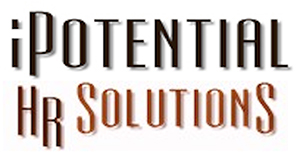by Enrique Baltierra, SPHR
Read original article here.
The workforce has shaped itself in different ways than many would have predicted. The last few years of economic downturn, corporate scandals resulting in lost benefits and lower stock prices have resulted in less movement across organizations and employees delaying retirement. Throw in a dynamic mix of immigrant talent and tech-savvy youth, and you have an interesting makeup in your work force.
Different work patterns, work/life priorities and types of financial or material rewards that these different groups seek can be increasingly difficult to manage—and this inevitably leads to conflicts. Generational differences are unique in that all of us tend to forget that our perspectives change over time and that each of us has a unique set of life experiences and expectations. Therefore, it is important to be able to find ways that we can ‘connect’ with each other and see the things that really drive us at work.
One of the first things that any organization must do to address these perception conflicts is structural. In other words, are company policies applied and enforced consistently across the organization? For example, if flextime is part of the ‘new’ culture, then what are the parameters for this benefit and does it make sense for the business to operate effectively? Being too generous with this benefit can impact productivity and information flow, regardless of what age groups are involved. Are all employees aware and communicated with regarding this benefit so that everyone can participate? Are abusers counseled and disciplined? The reality is that recent studies have supported the fact that employees across almost all demographic lines have similar levels of commitment and work ethic. As a result, employees across all generations will not tolerate poor performance or sloppy work ethic. But if this particular benefit is managed poorly, then the perceptions will remain that a certain generation is not carrying the same work ethic.
Another way to minimize generational conflict is to refine the company’s mentoring program and find ‘champions’ in each age group. Mentors need to be trained and evaluated for their ability to effectively communicate, listen and be emotionally intelligent in a diverse workforce. Mentors with these characteristics can be from different age groups but should have enough organizational experience and knowledge to be seen as helpful. This may mean fewer mentors, but you might find those who have a passion for this activity, do it well and gain respect from other generations. In addition, mentors can be counted on to diffuse mistaken perceptions and comments from other workers. Most importantly, mentors can help set positive but realistic expectations and provide a reality check to entitlement behavior.
Finally, it is important for employees to connect. While many employees have had diversity awareness education, the bottom line is that coworkers simply need to spend time with each other and realize the characteristics that they hold in common. One suggestion might be during the next team meeting to have individuals pair up by different age groups and share their experiences around various topics such as education, technology interests and fears, musical interests, most memorable historical events and needs for a successful work day. Past experience has proven this exercise to be very successful as groups immediately find plenty of information that can keep the dialogue going and reinforce relationships. Often, there are many connections based on similar interests. Through building relationships and trust, there tends to be much more accountability to a team or a workplace.
You, as manager, have the best opportunity to address conflicts by reminding yourself of the talent on your team so that you can respond to perceptions. You have a unique challenge to ensure that work teams become and remain culturally and generationally diverse because of the wealth of information and experience that individual team members can offer. But your real opportunity is the ability to facilitate learning through some of the above activities and to engage the different generations in this process.
